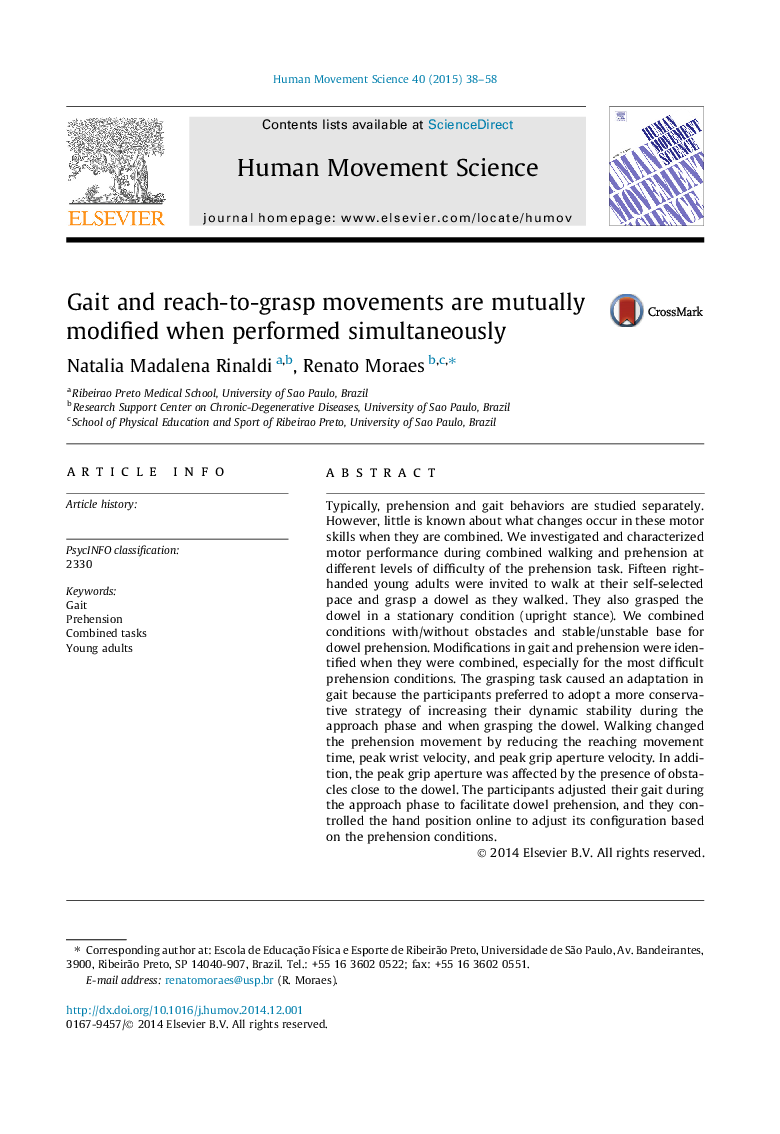| Article ID | Journal | Published Year | Pages | File Type |
|---|---|---|---|---|
| 7291990 | Human Movement Science | 2015 | 21 Pages |
Abstract
Typically, prehension and gait behaviors are studied separately. However, little is known about what changes occur in these motor skills when they are combined. We investigated and characterized motor performance during combined walking and prehension at different levels of difficulty of the prehension task. Fifteen right-handed young adults were invited to walk at their self-selected pace and grasp a dowel as they walked. They also grasped the dowel in a stationary condition (upright stance). We combined conditions with/without obstacles and stable/unstable base for dowel prehension. Modifications in gait and prehension were identified when they were combined, especially for the most difficult prehension conditions. The grasping task caused an adaptation in gait because the participants preferred to adopt a more conservative strategy of increasing their dynamic stability during the approach phase and when grasping the dowel. Walking changed the prehension movement by reducing the reaching movement time, peak wrist velocity, and peak grip aperture velocity. In addition, the peak grip aperture was affected by the presence of obstacles close to the dowel. The participants adjusted their gait during the approach phase to facilitate dowel prehension, and they controlled the hand position online to adjust its configuration based on the prehension conditions.
Keywords
Related Topics
Life Sciences
Neuroscience
Cognitive Neuroscience
Authors
Natalia Madalena Rinaldi, Renato Moraes,
